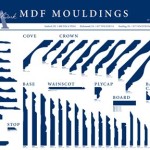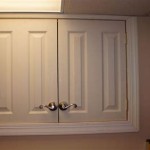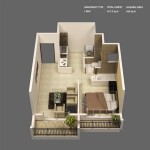Interior Design Summer Courses in Europe: An Overview
Europe, with its rich history, diverse cultures, and influential design movements, presents an unparalleled landscape for studying interior design. Summer courses in interior design offered across the continent provide concentrated, immersive learning experiences for students, professionals, and enthusiasts alike. These courses cater to a wide range of skill levels and interests, offering introductory explorations, specialized skill development, and advanced conceptual studies.
The allure of studying interior design in Europe stems from the accessibility to iconic design landmarks, exposure to contemporary trends, and interaction with established designers and architects. Participants benefit from hands-on workshops, site visits to significant architectural spaces, and the opportunity to develop a portfolio infused with European design sensibilities.
Summer courses typically range in duration from one to several weeks, allowing participants to fit their studies into busy schedules. The curriculum is often structured around specific design themes, techniques, or software applications, ensuring focused learning within a defined timeframe. Many courses incorporate elements of sustainable design, reflecting the growing emphasis on environmentally conscious practices within the industry.
Key Benefits of Pursuing Summer Interior Design Courses in Europe
Several advantages accrue to individuals who choose to pursue interior design summer courses in Europe. These benefits extend beyond purely academic gains, impacting personal and professional development in significant ways.
Firstly, the exposure to diverse design aesthetics is invaluable. European design encompasses a spectrum of styles, from the minimalist Scandinavian approach to the opulent Baroque tradition. Immersing oneself in this variety broadens one's understanding of design principles and encourages the development of a more nuanced and adaptable design perspective. Students can study in locations like Italy, renowned for its classical and contemporary design, or Denmark, known for its functional and minimalist approach. These diverse settings provide unique learning experiences and facilitate the development of a well-rounded design sensibility.
Secondly, the opportunity to network with international professionals is a considerable asset. Summer courses often attract participants from various countries, fostering a collaborative learning environment and creating a network of contacts that can prove beneficial throughout one's career. Instructors are frequently practicing designers, architects, and academics who bring real-world experience and industry insights to the classroom. These connections can lead to internships, job opportunities, and valuable mentorship relationships.
Thirdly, the enhancement of one’s portfolio is a tangible outcome of many summer programs. Courses frequently incorporate design projects that allow participants to apply their newfound knowledge and skills, resulting in tangible additions to their professional portfolios. Critiques from instructors and peers provide valuable feedback, enabling students to refine their work and develop a stronger presentation style. A well-developed portfolio is essential for showcasing one's capabilities to potential employers or clients.
Popular Course Topics and Locations
The range of available summer courses is extensive, covering a diverse array of topics and offered in numerous locations across Europe. The selection of a suitable course depends on individual interests, skill levels, and career aspirations.
One popular topic is the study of specific design movements. For example, a course focused on Bauhaus design might be offered in Germany, allowing students to explore the historical context and philosophical underpinnings of this influential movement. Other examples include courses focused on Art Nouveau in cities like Barcelona or Vienna, or explorations of Mid-Century Modern design in Scandinavia. These courses provide a deep dive into the history and theory of specific design styles, enabling students to understand the context and evolution of design principles.
Another prevalent category focuses on technical skills development. Courses in computer-aided design (CAD) and building information modeling (BIM) software are highly sought after, equipping participants with the tools required to create professional-quality technical drawings and visualizations. These courses often incorporate hands-on workshops and project-based learning, allowing students to practice and refine their skills in a practical setting. Specific software packages covered may include AutoCAD, Revit, SketchUp, and 3ds Max.
Furthermore, courses in sustainable design are gaining increasing popularity, reflecting the growing demand for environmentally responsible design practices. These courses explore topics such as material selection, energy efficiency, and waste reduction, providing participants with the knowledge and skills to create sustainable and eco-friendly interior spaces. These programs often incorporate case studies of successful sustainable design projects and provide guidance on obtaining LEED certification.
Factors to Consider When Choosing a Summer Course
Selecting the right summer interior design course requires careful consideration of several factors to ensure that the chosen program aligns with individual goals and learning preferences.
Firstly, assess individual skill levels and learning objectives. Introductory courses are suitable for individuals with little or no prior experience in interior design, while advanced courses cater to professionals seeking to expand their knowledge and skills in a specific area. Understanding one's current skill level and desired learning outcomes is crucial for selecting a course that provides an appropriate level of challenge and support.
Secondly, research the course curriculum and instructors. A detailed review of the course syllabus will provide insights into the topics covered, the teaching methodologies employed, and the assessment criteria used. Investigating the instructors' backgrounds and experience can help determine their expertise in the subject matter and their ability to provide effective instruction. Ideally, the instructors should have both academic credentials and practical experience in the field of interior design.
Thirdly, consider the location and duration of the course. Different locations offer unique cultural and design experiences, and the duration of the course should align with one's availability and budget. Some courses may involve travel and accommodation costs, which should be factored into the overall cost of the program. Additionally, consider the accessibility of the location and the availability of transportation options.
Fourthly is the accreditation of the school or institution offering the course. Accreditation ensures that the program meets certain quality standards and is recognized by industry professionals. Accreditation can also be a factor when seeking employment or further education in interior design.
Finally, explore funding options and scholarships. Several organizations and institutions offer scholarships and financial aid programs to support students pursuing interior design education. Researching these opportunities can help offset the cost of tuition and other expenses associated with attending a summer course.
By carefully considering these factors, prospective students can make informed decisions and select a summer interior design course in Europe that enhances their knowledge, skills, and career prospects.
The European setting provides a unique and enriching environment for studying interior design, offering unparalleled access to design history, contemporary trends, and international networking opportunities. The concentrated format of summer courses allows for focused learning and skill development within a relatively short timeframe, making them an attractive option for individuals seeking to advance their careers or explore their passion for design.
Ultimately, a summer course in interior design in Europe can serve as a catalyst for personal and professional growth, fostering creativity, enhancing technical skills, and expanding one's understanding of the global design landscape. The investment in such an experience can yield significant returns in terms of career advancement, personal fulfillment, and a deeper appreciation for the art and science of interior design.

Best Interior Design Schools In Europe Claudia Ambrosi
How To Get An Interior Designer Job In Europe From Quora

Top 10 Interior Designers In Europe Covet Edition

International Summer School 2024 Info Session Escp Business

The Top Industrial Design Schools In Europe And U K Azure

Elevate Interior Design Career In Europe Expert Gui 2024

Top 5 Interior Design Schools In Europe

European Interior Designers Our Top Choice

Elevate Interior Design Career In Europe Expert Gui 2024

Top 10 Interior Designers In Europe Covet Edition
Related Posts








